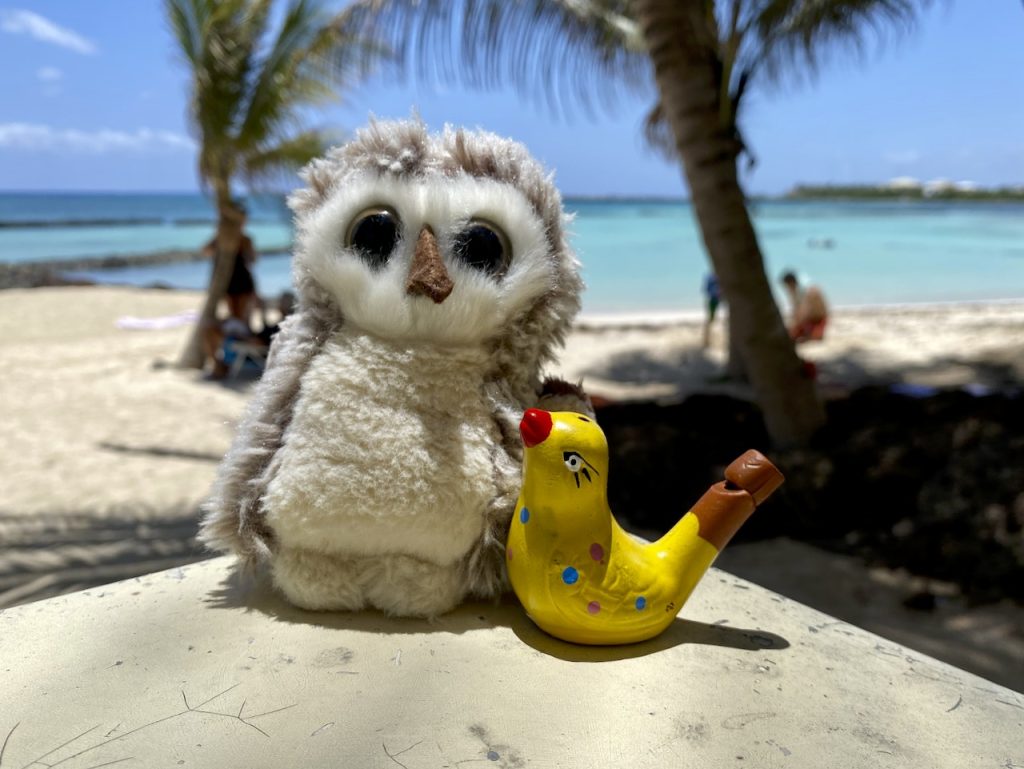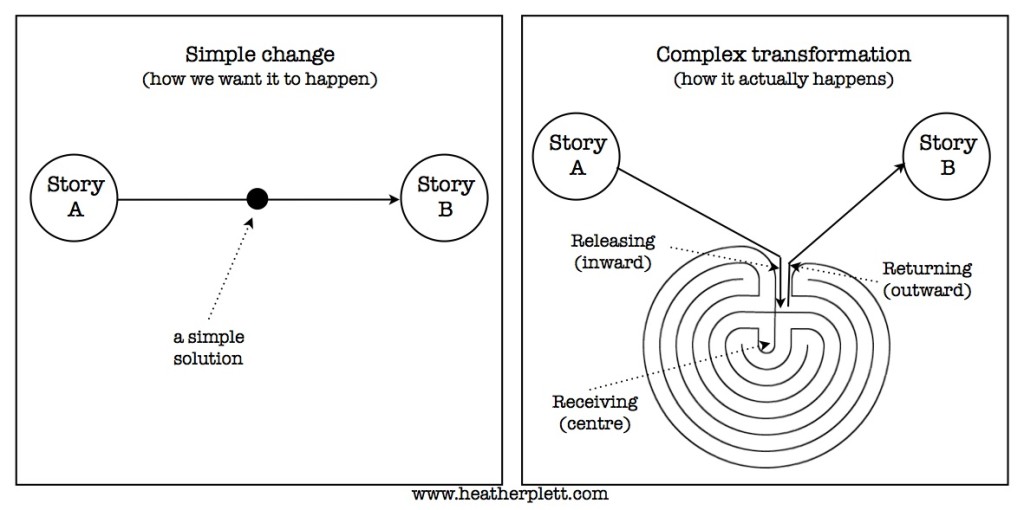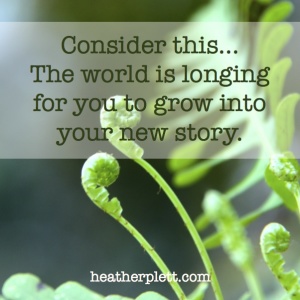The birds I carry with me (lessons on living and dying well)

In my luggage, I carry two birds – a grey stuffed owl and a yellow clay bird whistle. Most of what I carry with me from place to place, as I travel across Central America, is functional, but these two things are purely sentimental.
At the beginning of this journey, just after I’d sold my house, I flew to Nova Scotia to be with my friend Randy one last time. While I was there, his wife and I loaded Randy into their wheelchair-accessible van so that I could drive to the small seaside graveyard where Randy’s body would be put to rest in the not-too-distant future. Randy had chosen that graveyard specifically because it overlooked the water, and he wanted me to see it so that I could picture him there once he was gone. While we sat at the edge of the serene graveyard, we listened to the song that Randy had chosen for his funeral, “Where Peaceful Waters Flow,” by his favourite musician, Chris de Burgh.
After the song had played, I turned to Randy and asked “If you can come back to visit me, to remind me of your presence after you have died, in what form can I expect to see you?” He paused for a moment and said “I’ll have to think about that for awhile,” and I knew he would, because it was just the kind of question that would inspire Randy’s thoughtfulness and playfulness. Although I never heard him use the term for himself, I would say that Randy was a mystic. He had a deep and contemplative spirituality that inspired me and made me feel safe.
The next day, Randy had an answer for my question. “I think I’ll visit you as an owl,” he said. “My eyes look a little like an owl’s do, plus I like the way owls sit and watch things so quietly, with what looks like wisdom.” It was perfect. Yes, Randy’s eyes were big and clear like an owl’s, and he had a wise way of witnessing the world. A few weeks later, after I’d arrived in Europe, Randy and his wife sent me a video of the owl they’d attached to the top of a fence post at the edge of the graveyard, near Randy’s burial site.
In mid-October, a month and a half after I arrived in Europe, Randy died. I knew the day was coming, and, because he’d chosen to die with medical assistance, I even knew the hour. By then ALS had taken much of his movement and speech capacity and he was ready to go. Randy wasn’t afraid of death – in fact, he anticipated that it would be a release into “pure joy”.
The day before Randy’s death, my friend Brenda arrived in Brussels to meet me for a week of traveling together. I’d warned her that I might not be a lot of fun on our first full day together, and she took it in stride. Brenda was the perfect person to be with on that day because she too was dying. Like Randy, Brenda was a deeply spiritual and contemplative person and she too had been intentional in preparing herself for death. She’d been living with cancer for several years by then and knew it would likely take her within the next year or two.
“I brought some candles,” Brenda said when she arrived, “in case you want to light them in honour of your friend. You do whatever you need to do, and I’ll be here to listen when you want to talk about it. We’ll create a little ceremony if you want to.”
When it was time for Randy to die, I left Brenda in the hotel and took a candle to a nearby park. I lit the candle on a bench and sat with my grief, knowing that one of the most beautiful people I’d ever known was leaving this earth and I’d never get to have another one of our meandering mystical conversations.
After the candle had burned for awhile, I blew it out and then did what I so often do when the emotions feel too big to hold or even name – I walked and walked and walked. While I was on the path through the park, the sun broke through the clouds and shone down on me through the trees. I took it as a sign that Randy’s soul had parted from this earth and he’d been released into pure joy. Surprisingly, I felt some of that joy in that moment, and when I turned onto another path, I was delighted (and somewhat confused) to see a tree full of parakeets. One doesn’t expect to see bright green parakeets in Brussels, but there they were. Apparently the city has been flooded with them for several years, since somebody released their pets into the wild.
The next day, before leaving Brussels, I bought a stuffed owl to keep Randy close as I traveled. That owl later became part of the circle’s centre when I taught workshops in Belgium, the Netherlands and later in Costa Rica, to honour the fact that Randy will always be with me and his wisdom will always be woven into my work.
From Brussels, Brenda and I traveled to Ghent where we wandered through cobblestone streets, took a boat tour, and sat in sidewalk cafés eating waffles. I talked about Randy, she told me about her love of all things Mary (stopping to take photos of every Mary statue she could find, usually next to old cathedrals), and in the evening, we watched the sun set over the city from our AirBnB window. Chemotherapy had taken a lot out of Brenda by that time, so her energy reserves were limited, but she was up for almost anything, as long as she could break it up with rest time. Often that rest time looked like her finding a park bench or coffee shop where she could pull out her sketchbook and work on a small water colour painting while I continued to wander the streets.
From there, we took a train to Luxembourg, the destination that had been Brenda’s reason for flying to Europe from her home in the U.S. Through her family line, Brenda was entitled to naturalized citizenship in Luxembourg, and she’d long dreamed of making another trip there to sign the final paperwork. She’d once hoped that she could use that citizenship to allow her easier travel in Europe or perhaps a year of living there, but by now, her only wish was that she’d complete the process before she died. Her friends and family had helped raise the funds to make this possible and I’d offered to travel with her to carry her bags when her energy flagged.
In Luxembourg, we stayed with Brenda’s relatives and they took us to explore parts of their beautiful (and small) country. We visited Brenda’s favourite castle and made a few stops in gift shops and galleries so that Brenda could share with me some of the local art and culture. In one gift shop, she delightedly picked up a clay bird whistle and told me how these birds, the peckvillchen, are traditionally given out at Easter in Luxembourg. Brenda has a collection of these little birds at home. I asked her to pick one out for me and we each took one with us.
Brenda’s citizenship papers arrived from Luxembourg a few weeks ago. A week later, almost exactly six months after she was with me in Europe, Brenda died. Although her friends and family knew it was coming, it still arrived more suddenly than anyone anticipated.
On the morning of her death, not knowing that she was departing, I woke up feeling unsettled and sad, even though I was on a beautiful island off the coast of Belize and could think of no reason for my emotions. I walked to the seashore and did two things that almost always help to soothe my nervous system – lay in a hammock and watched the waves and shorebirds. Above me, pelicans and frigatebirds floated effortlessly in the air, occasionally diving down to catch a fish. Later I found out that Brenda had joined Randy in that place of pure joy and I thought it fitting that it happened while I was watching the birds.
The day after Brenda died, I went snorkeling. It seemed a strange thing to be doing, while holding the grief of my friend’s death, and yet it also felt right. Like me, Brenda delighted in exploring the world’s beauty, and I knew she would have encouraged me to keep on finding beauty in the world and keep on seeking joy, even while I cried. Once again, grief and joy were my side-by-side companions.
A few days ago, I lay in another hammock on another island (in Mexico this time), watching Brenda’s memorial service online – the second such service I’ve watched virtually in six months. During the service, the spiritual leaders at the front led the group in singing the Beatles song, Let it Be. “When I find myself in times of trouble, Mother Mary comes to me, speaking words of wisdom, let it be. And in my hour of darkness, she is standing right in front of me, speaking words of wisdom, let it be.”
In the week since, I have continued to be in this liminal space, betwixt and between the beauty and the loss, the joy and the grief. Sometimes one is more present and sometimes the other, and sometimes both show up at once.
The more I live with these seemingly contrasting states, the more I know there are no clear lines between them. There is room for both in my heart, and there is less and less uneasiness in allowing them to coexist. One doesn’t need to chase the other away. In fact, each enriches the other. The beauty is even more vibrant when it stands next to loss, the joy is even more potent when it stands next to grief. On the flipside, loss and grief feel richer and easier to bear when their companions offer them balance.
Like the yin and yang symbol teaches, two elements that are seemingly opposite can exist in one cohesive whole and each holds within it elements of the other.
Last year, after Randy told me he was dying and we started having weekly conversations that centred, in part, around his upcoming death, I started asking myself what it means to live at the intersection not only of grief and joy, but of life and death. Now, since Brenda died, those thoughts have once again risen to the level of my consciousness.
Is there a way to stand on that curvy line of the yin and yang symbol and hold both death and life in the same circle of wholeness within me? What if death is not the opposite of life? What if death is part of life, life is part of death, and each enriches and gives balance to the other?
If those things are true, and I can hold both, what does that look like and how does it change me?
I am still at the early stages of this inquiry, so I expect that more will evolve in my consciousness, but one thing I do know is that I want to do what I witnessed both Randy and Brenda do – make peace with my death before it arrives.
For starters, I’m asking myself a series of questions about what feels most important to me, if I truly believe that I am dying. What do I most value and love? What things do I want to stop doing if my time on earth is limited? What self-consciousness, fear, judgement, etc., ceases to be important if life is short? What relationships need repair? How do I want to treat myself? How do I want to treat others? Where will I invest my time, resources and money?
These questions don’t threaten any drastic changes in my life, since I’ve already been on this intentional journey this year to get clearer on who I am and how I want to live, but they have clarified some things for me. I know that I want to continue to orient my life toward joy. I know that I will continue to write, teach and speak with more and more courage and clarity and less and less concern about how people will judge me. I know that I will prioritize the relationships that matter most to me and make repairs to heal those that are worth investing in. I know that I will no longer abandon myself or martyr myself in service to harmful systems. I know that I will always pause for beauty.
Both of my friends wanted to be at peace with their deaths and to spend their final days living joyfully, and with as little anxiety, disappointment, or regret as they could manage. To do that, they both embraced their spiritual practices, prioritized what they valued most, and embraced those they loved and wanted to hold close. I will do what I saw modeled, and when it is my time to go, I will invite death in, knowing that I have lived well. Then, when my last breath has left my body, I will step from this life into pure joy.


